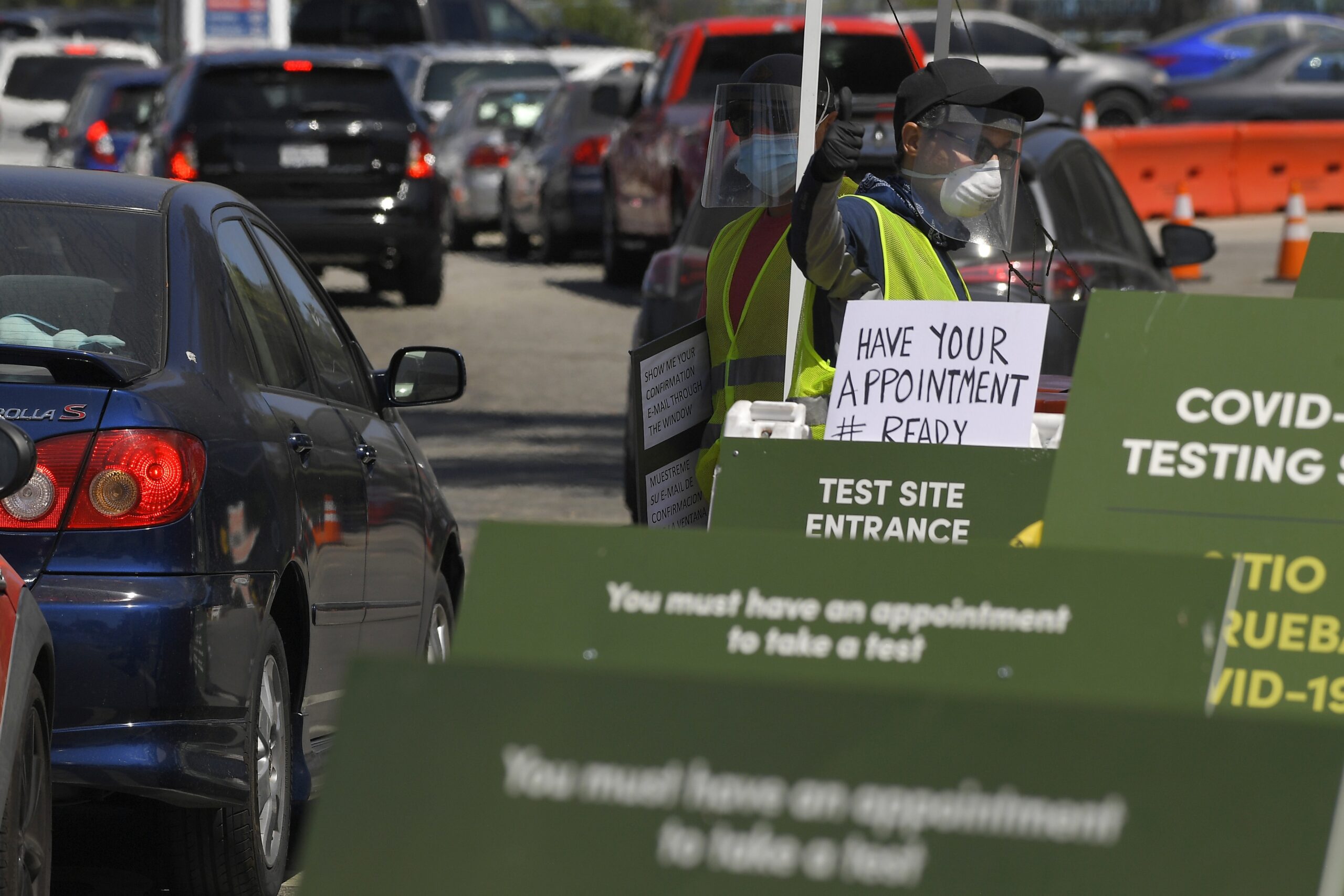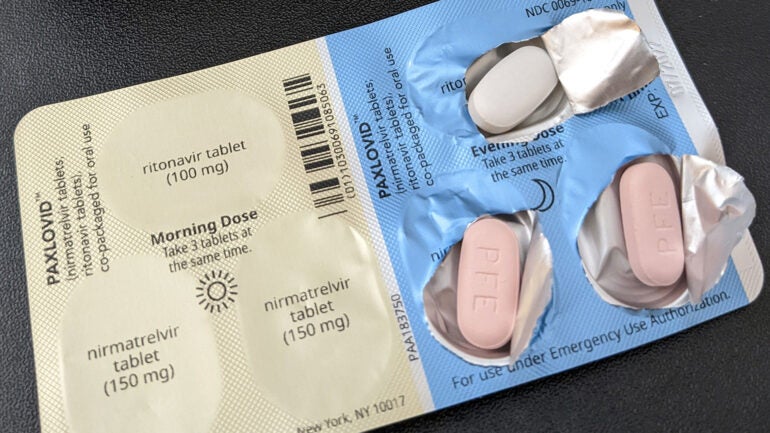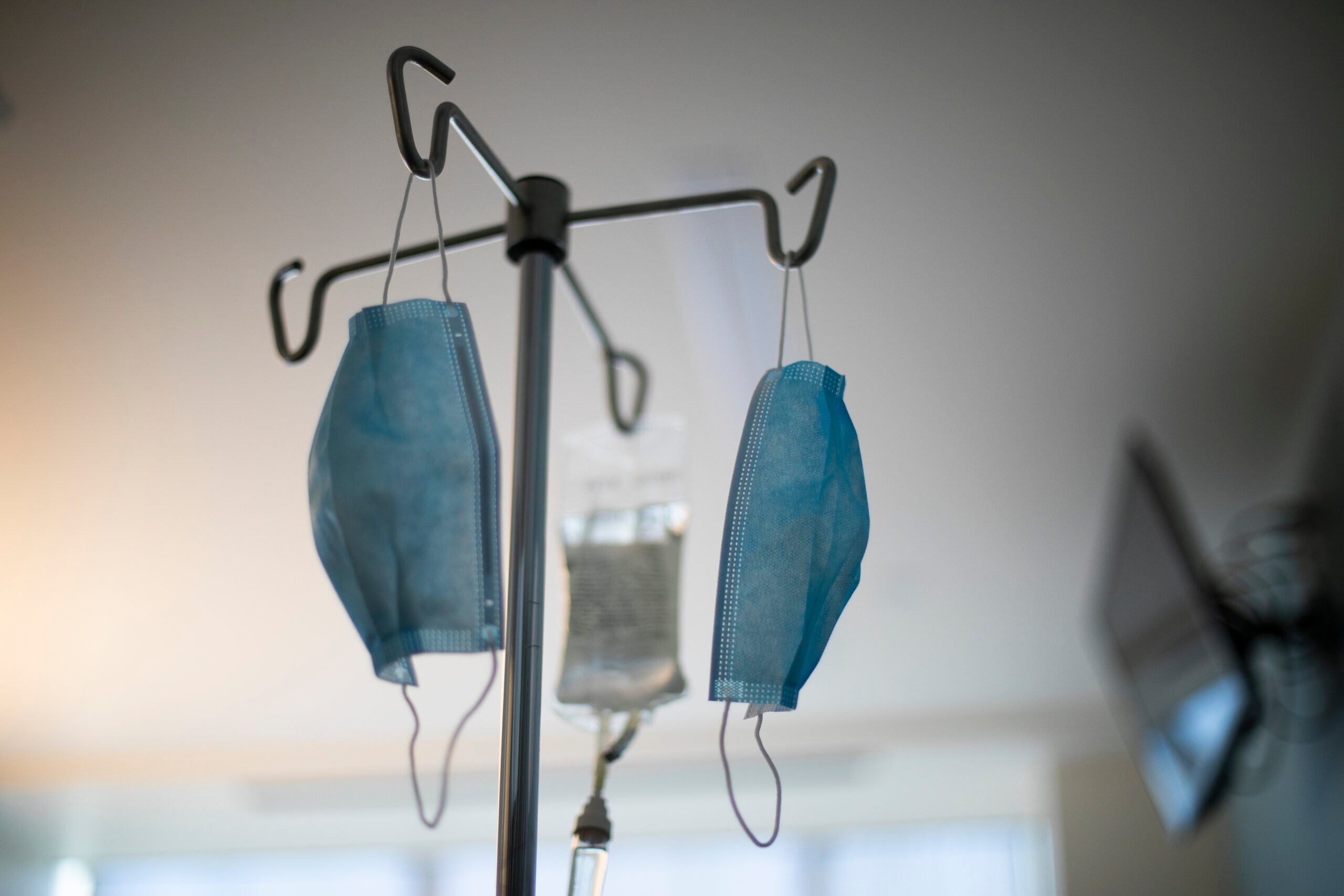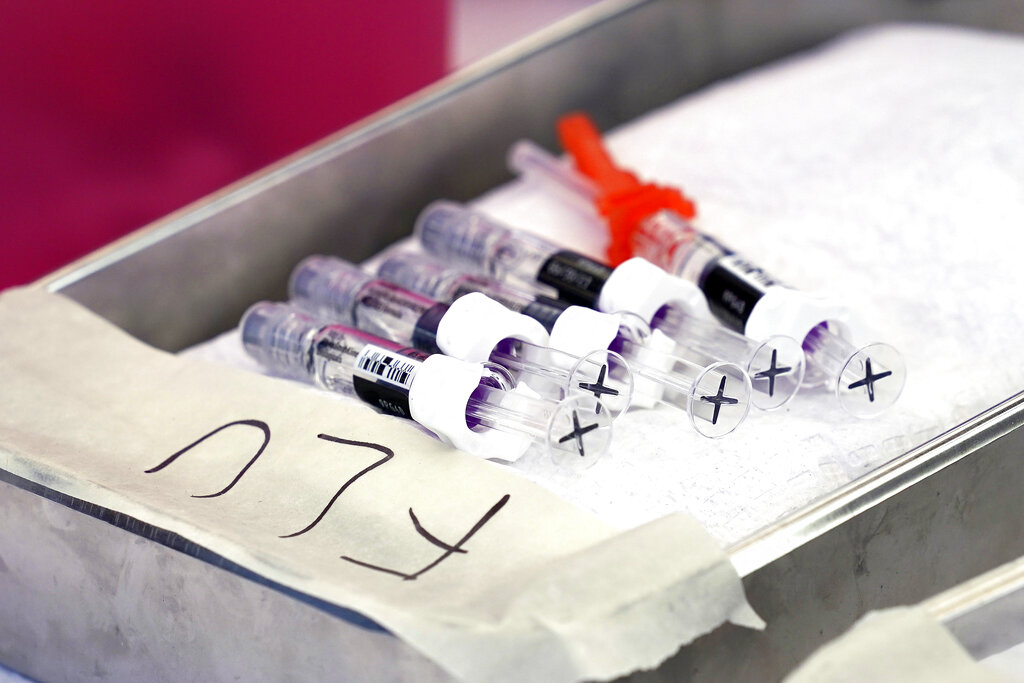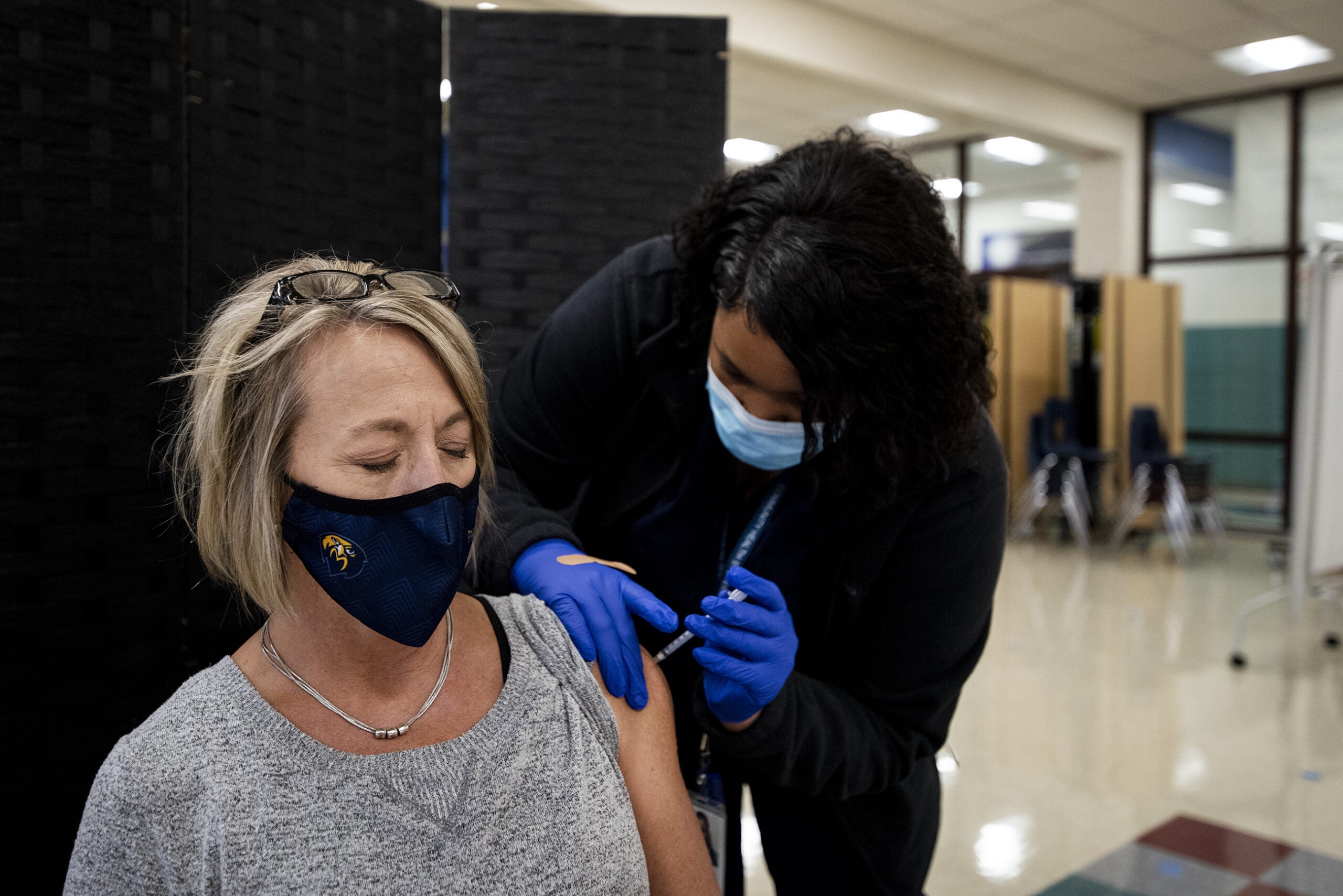The number of new COVID-19 cases reported Thursday by the Department of Health Services in Wisconsin is the third-largest total since the start of the pandemic.
DHS reported 900 new cases of the virus on Thursday, bringing the average for the past seven days to an all-time high of 817 cases per day.
The seven-day average of daily positive cases has been rising steadily since mid-June. One week ago, the average was 596 daily cases. Two weeks ago, the average was 502 daily cases.
Stay informed on the latest news
Sign up for WPR’s email newsletter.
The latest figures bring the overall total of positive cases in Wisconsin to 39,627, according to the DHS. A total of 831 people in Wisconsin have died from COVID-19, with four new deaths reported on Thursday.
In a press briefing Thursday, Dr. Ryan Westergaard, the chief medical officer and state epidemiologist for communicable diseases at DHS, said the department’s data is showing worrying signs.
“When looking at the epidemic indicators, the data around cases, the news is mostly bad,” Westergaard said. “We are in a bad position. The trend is going in the wrong direction.”
Westergaard said that the majority of young people currently being tested for coronavirus are doing so because they are showing symptoms of the virus. He noted that because young people often display minimal or no symptoms at all, that could mean that the state is only testing “the tip of the iceburg.”
According to DHS, 6.3 percent of all test results reported on Thursday were positive for COVID-19, bringing the average percentage of positive tests over the past seven days to 7.2 percent. That average positive case rate has held steady for the past seven days: A week ago, the average was 7.3 percent; two weeks ago it was 5.3 percent.
The percentage of positive tests is often read by public health officials as a measure of overall testing levels. A high rate could indicate that testing in the state is limited, and skewed toward those already flagged as potentially having the virus. A lower rate could indicate testing is more widespread.
Changes in the test positivity rate can also speak to a virus’ spread, if the size and makeup of the testing pool stays consistent.
Wisconsin’s daily testing capacity — based on the availability of test supplies and adequate staffing — has grown from 120 available lab tests in early March to 24,362 as of Thursday. The number of actual tests reported on Thursday was 14,271.
Wisconsin has averaged 11,691 tests a day over the last week based on DHS numbers, the third-highest that number has been since the start of the pandemic.
Overall, DHS has recorded a total of 739,297 tests over the course of the pandemic. 699,670 have come back negative.
COVID-19 activity varies heavily from county to county. The latest coronavirus activity data from DHS, released once per week each Wednesday, showed that 59 counties had a “high level” of coronavirus activity, up from the previous week’s 47 counties. Activity level designations are based on “burden,” or the number of new cases per a county’s population over a 14-day period, as well as whether there’s an upward or downward trend in new cases.
On Wednesday, counties with the highest case rates per capita included Milwaukee, Trempealeau and Marquette. The counties with the most significant upward trends included Price, Pepin and Iron.
There have been confirmed cases in all 72 of Wisconsin’s counties, and based on the data from Wednesday, all counties reported at least one case over a two-week period.
___________________________
DHS still has a dashboard showing Wisconsin’s progress on gating criteria under the now-defunct Badger Bounce Back Plan. Those gating criteria would have been used to determine when it would be safe to begin reopening the state, prior to the state Supreme Court ruling that ended a statewide stay-at-home order. The state has never met all six of the criteria at once.
Two of the criteria are a statistically significant 14-day downward trend in COVID-like cases reported in emergency departments, and a similar downward trend for influenza-like cases in emergency departments. Wisconsin does not currently meet either of those criteria.
According to DHS, 3,968 people have been hospitalized because of the virus as of Thursday. That means at least 10 percent of people who have tested positive for the new coronavirus in the state have been hospitalized. DHS officials said they don’t know the hospitalization history of 13,012 people, or 33 percent.
Wisconsin Public Radio, © Copyright 2024, Board of Regents of the University of Wisconsin System and Wisconsin Educational Communications Board.

